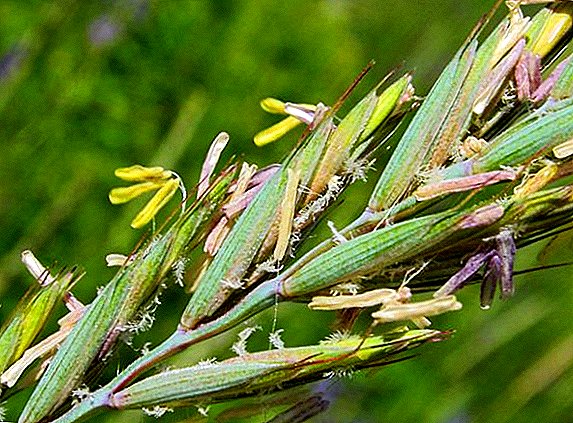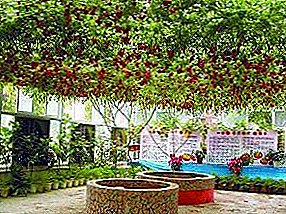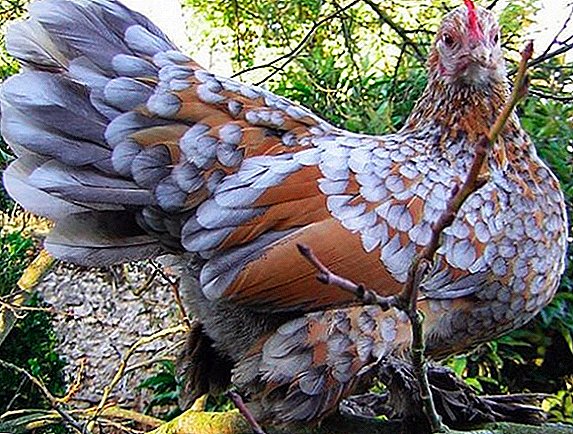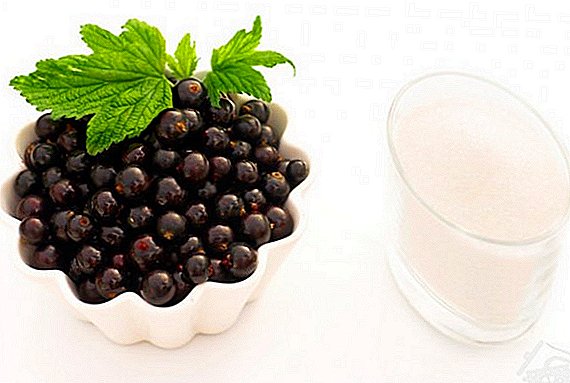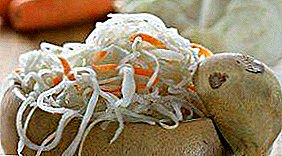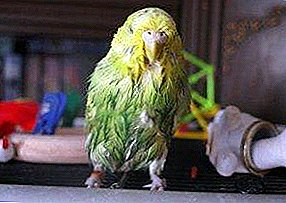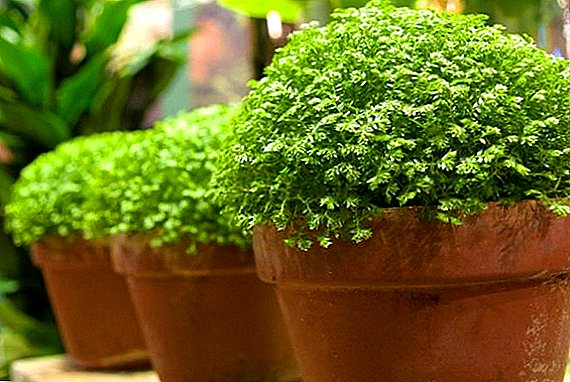 A common plant in tropical countries - Selaginella (Selaginella), is the oldest plant on Earth and the only genus of spore plants.
A common plant in tropical countries - Selaginella (Selaginella), is the oldest plant on Earth and the only genus of spore plants.
At a favorable time, when it does not need moisture, it is an evergreen plant that looks like a fern.
Types of Selaginella for indoor floriculture
The numerous genus Selaginella includes about 700 different species, but only a few have been able to adapt to room conditions. The most common are:
Selaginela Jory. Variety of plants with modest small size. Laconic bushes with standing shoots, painted in light green color with a golden edging.  Selaginela Martens. Low-growth species, carpets the ground with a fluffy carpet, something like moss. The stems are straight, can reach 20 cm. It grows well with diffused light and abundant moisture, used to create small greenhouses.
Selaginela Martens. Low-growth species, carpets the ground with a fluffy carpet, something like moss. The stems are straight, can reach 20 cm. It grows well with diffused light and abundant moisture, used to create small greenhouses.  Selaginella scaly. Thanks to an unusual form resembling a flower, it got its second name - the Rose of Jericho. The shoots have a length of 10-15 cm, when dry, they begin to twist together with the leaves inside, forming a shape in the form of a coil.
Selaginella scaly. Thanks to an unusual form resembling a flower, it got its second name - the Rose of Jericho. The shoots have a length of 10-15 cm, when dry, they begin to twist together with the leaves inside, forming a shape in the form of a coil.
It can often be found on sale in the form of a ball of crooked dry grass, completely dead in appearance. When it gets into the water, the flower "in the eyes" comes to life, during the day it blooms with fluffy sprigs and becomes saturated green. 
Did you know? Selaginella has the ability to live without water for several decades!Selaginella bezpuzhkovoy. It looks like a decorative grass with short stems, densely covered with tiny delicate leaves. With proper watering and air humidity, it forms a soft fluffy carpet on the soil.
Optimal conditions for growing at home
Selaginella has very short roots, therefore, when growing this crop, a wide and flat container should be preferred. If the conditions for the life of the plant are favorable, it will quickly begin to grow.
The most popular indoor plants are: violets, monsteras, orchids, guzmanii.
Location and lighting
The flower is very fond of warm and damp places. For the growth it needs diffused light or shadow. Selaginella is the perfect solution for landscaping windows facing north or for rooms with artificial lighting. 
Temperature
Selaginella does not like temperature extremes, she needs a constant air temperature throughout the year +20 C.
Peculiarities of home care
Selaginella does not bloom, but it is valued for its unique forms and unusual leaves, and in order to contemplate this unique beauty for a longer time, it is necessary to follow the rules of caring for the plant.
Watering and humidity
As a representative of tropical culture, selaginella needs special care at home. The cultivated flower feels great in conditions of high humidity. If it is not possible to spray seaginella several times throughout the day, then you can put a container with a flower in a pan with water.
The flower likes abundant watering, because it does not have a state of rest, then it is watered equally, both in summer and in winter.
Important! If the winter air temperature in the room has dropped below +18 C, then it is necessary to reduce the frequency of the plant.Water for irrigation of selaginella should be well settled, soft, room temperature. Do not allow the soil mixture to dry in a pot, it should be wet all the time.
Soil and fertilizer
For the well-being of selaginella, it needs a moisture-absorbing and nutritious mixture consisting of chopped sphagnum, sand and soddy earth. The reaction of the soil is slightly acidic or neutral.
Top dressing of a flower is made every two-three weeks throughout the spring - autumn period. For the fertilizer Selaginella, you can use an orchid feed or use nutrient mixtures for ornamental deciduous plants, halving the recommended dose. 
Transplant rules
Replant the flower once every few years in the spring. Pot for plants need to pick shallow, almost flat and wide shape. At the bottom of the tank lay out the drainage layer, the post-earthen mixture. Selaginella feels great in special aquariums.
Important! You do not need to remove the shriveled and brown leaves of seaginella - so it gives you to understand that it lacks watering.
Reproduction of selaginella at home
In its natural environment, this species multiplies using spores, but at home it is very troublesome, it is much easier to propagate it by dividing the bush into several parts: the part of the plant is separated from the rhizomes with shoots that root in several pieces in small containers filled with nutritious soil.
For better rooting, the flower creates conditions close to the greenhouse. The containers are covered with a plastic bottle or plastic wrap and ensure that the high humidity is maintained under it.  Some species of seaginella grow roots on the stem, in which case they separate the rooted part of the flower.
Some species of seaginella grow roots on the stem, in which case they separate the rooted part of the flower.
Did you know? Spores of moons burn with a bright flash, this feature was noted and used for some time in the manufacture of Bengal lights and fireworks.
Diseases and pests of selaginella
Pay attention to the appearance of selaginella, she will tell you where to look for a solution to the problem:
- the leaves are limp and soft — there is no air access to the root system, since the soil in the pot is heavily flooded. Adjust the watering or transplant the flower to a new land. Before transplanting carefully inspect the plant, remove the rotten roots, treat the remaining solution of fungicide. The treated plant must be planted and covered with a plastic bag to create greenhouse conditions;
- the leaves are drawn out and have an unhealthy pale look — lack of lighting or watering is done with too hard water. For irrigation, it is better to use separated water, if the state of the flower does not change - apply top dressing with iron chelate or ferrovit;
- discoloration and dying off of leaves — the high temperature of the air affects the flower, it is necessary to increase the humidity of the air in the room;
- leaflets roll up — cold drafts affect a plant or high air temperature indoors;
- the growth of the flower decreases; there are no nutrients in the soil of the plant;
 Selaginella does not tolerate drafts and reacts sharply to them. It practically does not get sick and very rarely is affected by pests, but when the microclimate is too dry, spider mites may attack the flower. To get rid of them, it is necessary to prepare a soap solution and treat them with a plant.
Selaginella does not tolerate drafts and reacts sharply to them. It practically does not get sick and very rarely is affected by pests, but when the microclimate is too dry, spider mites may attack the flower. To get rid of them, it is necessary to prepare a soap solution and treat them with a plant.Did you know? In some countries, morass spores are still used in medicine as a powder for bedsores.Selaginella is a capricious plant, and in case of inadequate care, it will not be long to please with its decorative beauty. But your efforts will quickly pay off, because this flower looks so original and combines well with other plants, it can be used as a ground cover when creating winter gardens, florariums, and a garden in a bottle.


